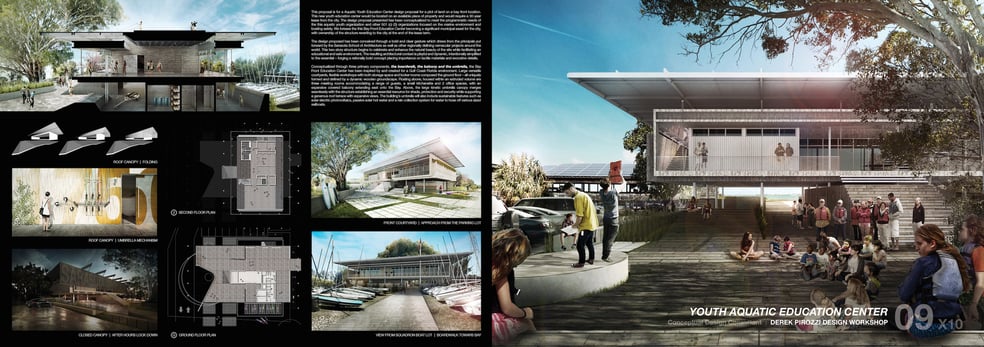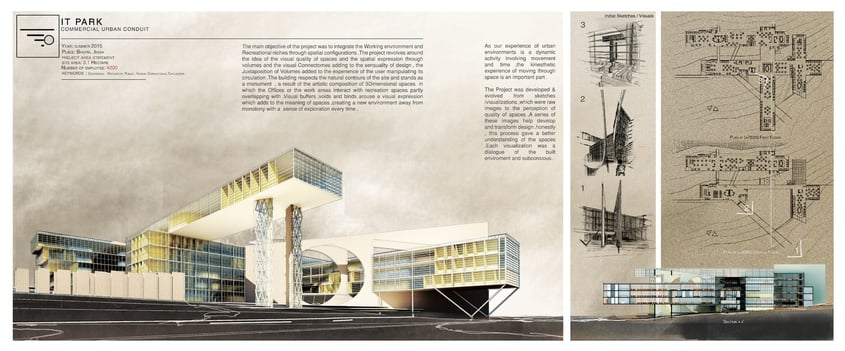An interior design portfolio will be the greatest tool any professional needs to showcase their expertise, skills and achievements to prospects and clients. Especially for students that may have just recently graduated, building a professional portfolio is like a specialised resume which will be required when applying to any position in the field. However, oftentimes the most difficult part is knowing where to start when creating or, for seasoned interior design veterans, updating and taking their design portfolio to the next level.
And while a visually stunning business card, a well-constructed resume, and an impressive LinkedIn profile are all essential avenues to demonstrate your capabilities and experience, it is your portfolio that recruiters, employers and potential future clients will pay attention to. And particularly during these unique times where face-to-face meetings are inconvenient or not possible, it is of utmost importance knowing what options are out there that can help capture and captivate whoever you are sending your portfolio to.
So let’s dive right in.
1. There is No “One Size Fits All”
Interior design portfolios are and should be time-consuming to put together. Just as you would not copy and paste the exact same cover letter to the jobs you’re applying to, you cannot produce just one version of your portfolio and expect good results. Every single firm and project will have different needs. So presenting a compilation of your work versus how your skills fit what your prospect is looking for can give off the message that you didn’t do your research or put in the effort required for a position or project.
2. Remember your Target Audience
With that said, the first question you should ask when organising your portfolio is “who is the intended audience”. Take the time to learn more about the company to get a better sense of who they are and their values. Adjusting to your audience is a huge factor in helping them understand your value and potential in a context that is more familiar to them. Plus, striking the balance between the types of media and projects will be critical in helping your potential future clients understand the full range of what you can do. While photorealistic renders are an exceptional addition, add in a few line drawings to show your abilities in technical drawings.

This page from Derek Pirozzi is a fantastic example of blending a variety of images to showcase his range of skills.
3. Utilize Mobile Tools
Many have started drifting away from physical portfolios, opting for an online or PDF version. Not only does it save on printing costs, but having your portfolio in your backpocket with you and ready to send wherever you go can ensure designers never miss an opportunity. However, when it comes to online portfolios or using PDF’s, there are quite a number of pros and cons to take into consideration. Online tools like presentation software or even advanced solutions like Virtual Reality often rely on servers and a strong internet connection. If the server decides to crash or you’re in a patchy wifi spot, your portfolios can take longer to load. However, on the flip side, presenting with a 2D platform like a PDF can be accessed from any device, but can sometimes be underwhelming. Not only will employers and prospects receive many submissions in the same format, but the true beauty of your project can be under appreciated in a flat medium.
4. Visualize More Clearly with VR
One tool that is becoming a more popular medium amongst professional interior designers is VR portfolios. Over the past few years, interior designers have gravitated towards using VR to showcase their projects in a new and impressive way. With its immersive capabilities, VR is able to transport the viewer right inside a designer's project bringing the sense of “wow” and wonder to any meeting. Not only can it seamlessly take viewers through the designer’s visual story, but it also takes them through an experience, one that is informative and memorable. This is one piece of technology that has taken the interior designer’s portfolio to the next level.
Give your prospects the opportunity to walk through and engage with your projects with VR.
5. Keep it Effective Yet Brief
It’s important to pack a punch with your portfolio but keep it brief. Especially during the early preliminary stages, submitting a 6-page portfolio will not be appropriate and will be more likely to be thrown out. Just as you would with your resume, condense your skills, accomplishments, and your images into a two-page version and have a longer more in-depth version that will fully highlight your proficiency for a later stage.
6. Include Team Projects
While the portfolio is mainly highlighting your skills, showcasing projects where you were a part of a team is also a great asset. Use this opportunity to focus in on some of your specialized skills that were utilized in a project or even an area that was new for you but executed well without much prior experience.

Showing successful team projects can also signal to your clients your ability to communicate and collaborate. Image Courtsey: Aayush Jindal
7. A Few Housekeeping Tips
Don’t forget before submitting any interior design portfolio to do a thorough font and grammar check. Keep font styles simple, easy to read, and use ones that will match the aesthetic you’re going for. Plus, look for any and all spelling or grammar mistakes -- while it may be small and insignificant, misspelled words can be unprofessional. Grammarly is a great tool that can help you quickly check over your copies.
One last tip -- check your portfolio file size. Try to keep your portfolio below 5MB to make sure it can be sent easily with any mail service.
Know Your Audience, Keep it Simple, and Diversify
Building portfolios can be overwhelming and stressful. While proposals and face-to-face meetings with clients are all important aspects of a project’s journey, it all starts with getting your foot in the door with the perfect proposal. So take the time learning about your audience, keep your portfolio brief yet impactful and explore a whole host of tools that are ready to help you tell your visual story better.
For more information on how to create your first VR project, check out this online resource that can help you get started. To learn how you can start creating content for Virtual Reality, click here to access our whitepaper.





.jpg?width=245&height=150&name=BUSINESS%20READY%20VR%2046%20(1).jpg)
%20(1).jpg?width=245&height=150&name=adults-business-deal-client-1496184%20(1)%20(1).jpg)
